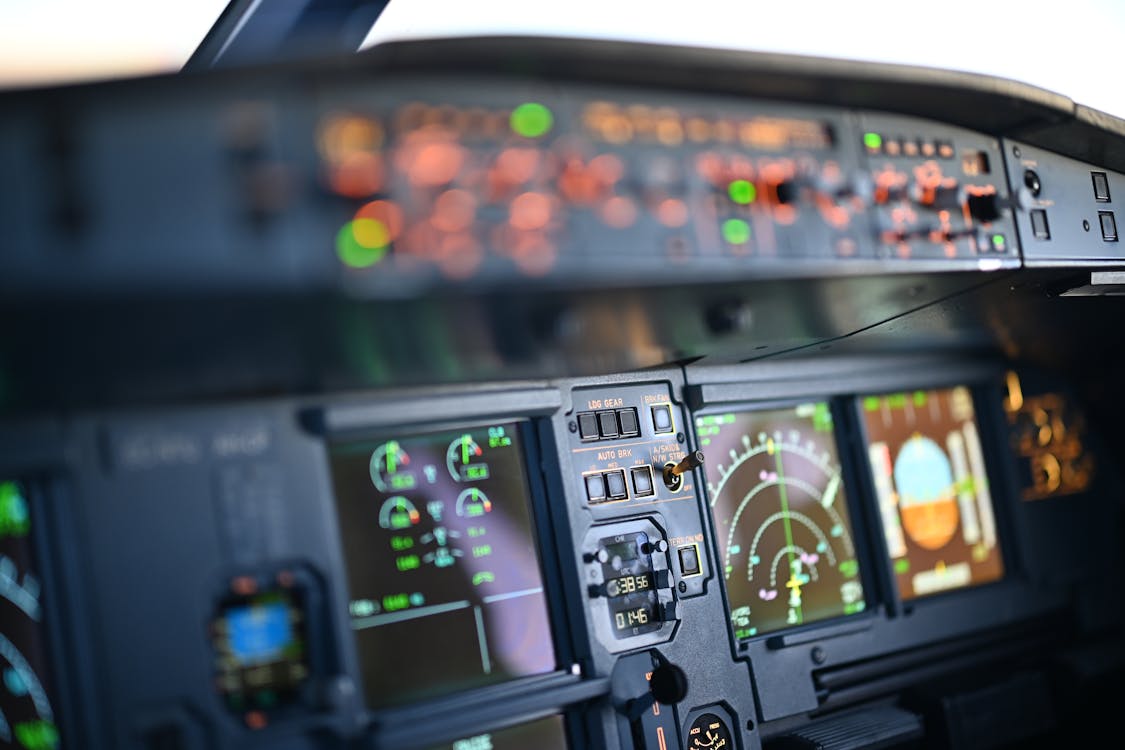Advanced Avionics: Shaping the Future of Flight
The evolution of avionics has played a pivotal role in transforming the aviation industry. From the earliest navigation instruments to today's sophisticated integrated systems, avionics have continuously improved the safety, efficiency, and capabilities of aircraft. This chapter delves into the realm of advanced avionics, exploring cutting-edge technologies and their potential to revolutionize the future of flight.
5.1 Next-Generation Cockpit Systems:
The traditional cockpit is undergoing a significant transformation. Modern aircraft are equipped with glass cockpits, featuring large format displays that integrate various flight information, navigation data, engine parameters, and alerts. These displays are highly configurable, allowing pilots to customize information presentation for optimal situational awareness.
Furthermore, advanced avionics are incorporating augmented reality (AR) technologies. AR overlays real-time information onto the pilot's view of the world, including terrain features, obstacles, and other aircraft, enhancing situational awareness and decision-making.
 |
| Advanced Avionics: Shaping the Future of Flight |
5.2 Enhanced Flight Management Systems (FMS):
Modern Flight Management Systems (FMS) are becoming increasingly sophisticated, incorporating advanced algorithms and automation features. These systems assist pilots in various aspects of flight, including:
- Route planning and optimization: FMS can calculate the most efficient flight paths, taking into account factors like wind, weather conditions, and fuel consumption.
- 4D navigation: FMS can track the aircraft's position in four dimensions (latitude, longitude, altitude, and time), enabling precise navigation along complex flight paths.
- Automatic descent and landing: FMS can automate the descent and landing process, reducing pilot workload and improving landing accuracy.
5.3 Advanced Navigation Technologies:
The landscape of navigation is rapidly evolving with the introduction of new technologies:
- Satellite-based augmentation systems (SBAS): These systems provide highly accurate positioning data that is used to improve the accuracy of GPS.
- Ground-based augmentation systems (GBAS): These systems provide precise landing guidance for aircraft approaching airports, especially in challenging weather conditions.
- Space-based navigation systems: Next-generation navigation constellations like Galileo and BeiDou are expanding global navigation coverage and improving accuracy.
5.4 Enhanced Communication Systems:
Advanced communication systems are crucial for ensuring safe and efficient air traffic management. These systems include:
- Data Link Communications (DLC): These systems enable real-time data exchange between aircraft and air traffic control, improving situational awareness and communication efficiency.
- Controller-Pilot Data Link Communications (CPDLC): This system allows pilots to send and receive text messages to air traffic controllers, reducing the reliance on voice communication and improving clarity.
- Automatic Dependent Surveillance-Broadcast (ADS-B): This system enables aircraft to automatically broadcast their position data to other aircraft and air traffic control, enhancing situational awareness and reducing the risk of mid-air collisions.
5.5 Future Trends in Advanced Avionics:
The future of avionics is brimming with exciting possibilities:
- Artificial intelligence (AI): AI will be increasingly utilized for automation tasks, including flight planning, decision support, and anomaly detection.
- Cybersecurity: With increased reliance on computer systems, robust cybersecurity measures will be essential to protect against cyber threats.
- Biometric authentication: Biometric technology like fingerprint or iris scanners may be used to verify pilot identity and enhance cockpit security.
- Connected aircraft: Aircraft will become increasingly connected to ground infrastructure and other aircraft, enabling real-time data exchange and improved operational efficiency.
5.6 Conclusion:
Advanced avionics are shaping the future of flight by enhancing safety, efficiency, and capabilities. As technology continues to evolve, we can expect even more innovative solutions to emerge, revolutionizing the way we fly and redefining the possibilities of air travel. This chapter has provided a glimpse into the exciting world of advanced avionics, highlighting the transformative potential of these technologies and paving the way for a safer, more efficient, and connected future for the aviation industry.


0 Comments